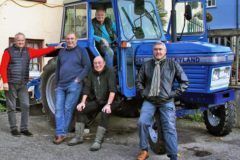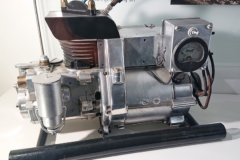Classic plant working weekend
Posted by Chris Graham on 10th March 2020
Jane Brooks shares thoughts and photos from the second, annual classic plant working weekend, which fascinated the spectators who gathered in South Warwickshire last summer.
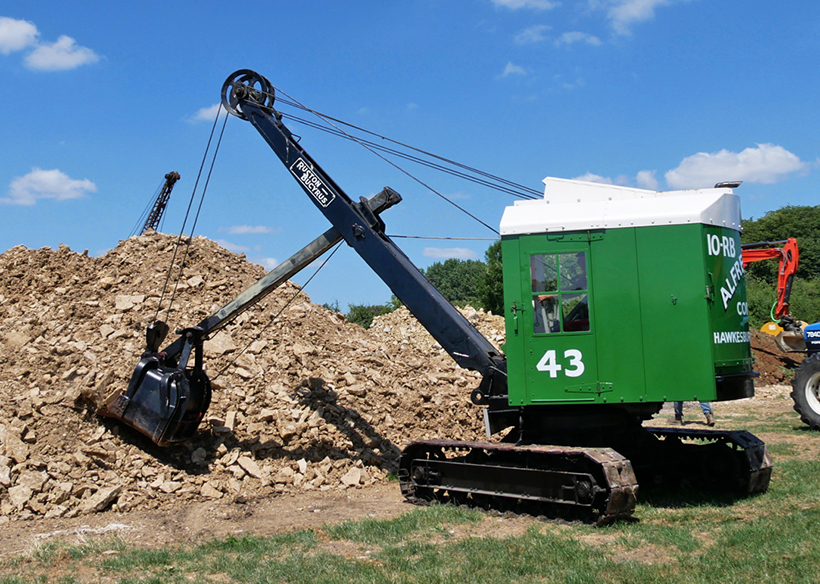
Classic plant working weekend: Originally supplied to HJ Baldwin Brickworks at Bunny, Notts., in 1943, John Pearson’s 10RB spent most of its working life there, before going to two further owners and finally being rescued by John.
This small but perfectly-formed gathering of a few like-minded friends came about as a response to the end of the Birdingbury Country Show, which was last held in 2017.
Included in the working area were a trio of rope excavators, father and son Charles and Jake Rollason had brought along a 10RB and a Smith 14, which were joined by John Pearson’s 10RB face shovel. Another interesting and very unusual machine was the Merton Overloader belonging to Paul Ambler.

Charles Rollason’s RB10 – Serial No. 28683 – was originally supplied (complete with dragline) to the Isle of Wight, where it spent its working life at Shorwell Plant.

The 10RB illustrates the story of its working life by the condition of its cab.
Melton machines
Middlesex-based Melton Engineering Company Ltd produced a small range of earthmoving machines. It started in business in 1921, as Merton Sand and Gravel Pits Ltd, but was renamed Merton Engineering Company Ltd during the 1940s. Then that operation went bankrupt in the late 1960s, and was acquired by Essex company, Whitlock Brothers Ltd.
Based on a Fordson, the Overloader was an unusual machine. It was designed to scoop, lift and load material without having to turn around, so the loading bucket does a complete arc over the top of the tractor unit.

Probably the most visually-frightening machine on display was Paul Ambler’s Merton Overloader, which appeared to require nerves of steel to operate!
Paul’s machine is powered by a Fordson 4d Dagenham series engine, on a Super Major skid unit. The engine uses the Simms Minimec in-line pump, which replaced the Simms vacuum pump in about 1963, which dates Paul’s example to 1964 or so. The Fordson Super Major was part of the E1A line of tractors, built at Ford’s Dagenham plant from 1951 until 1964
Watching Paul in action on the loader isn’t for the faint-hearted! Although the machine it’s mechanically sound and in good overall working condition, the sight of the loader making its way over the top of the tractor unit is quite disconcerting. Operating the machine isn’t a particularly comfortable experience, either, as the seat is fixed in place and doesn’t swivel to facilitate a view of the rear, as you’re unloading. I suppose the only advantage is that, compared to a front-end loader, this machine is more manoeuvrable in small spaces.
Ruston Bucyrus stars!
One of the stars of the weekend was John Pearson’s 1943 Ruston Bucyrus 10RB face shovel. This machine almost ended up being cut up for scrap some 20 years ago but, thankfully, John managed to buy and save it, although it was in a somewhat derelict condition.
The 10RB was originally supplied to HJ Baldwin Brickworks at Bunny, Nottinghamshire, through a WW2 Ministry of Supply scheme to keep the brickworks going throughout the war. It spent most of its working life there, then went to two further owners before falling into John’s hands.
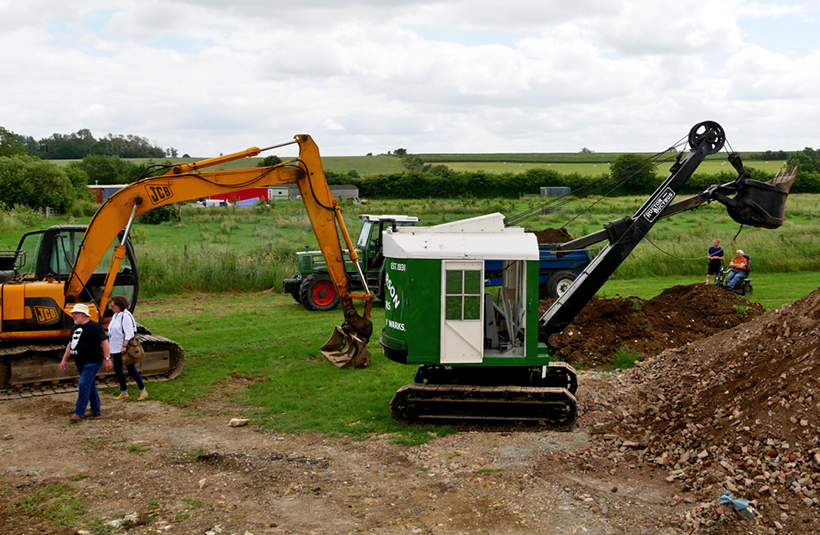
Within the working area, visitors were able to get close to the machinery for a good look and wander around, between sessions.
In recent years, the 10RB has undergone a total restoration. The replacement Ruston HR3 engine which, itself, needed rebuilding, came from a Ruston compressor that had been in use at the North Wales Railway. All the bearings were renewed, together with the turntable, bushes, pins and a new cab, even down to creating hinges to replicate the originals. On the bucket, the teeth all needed welding and re-shaping, and a cast bottom was riveted to the steel. All-in-all, the rebuild took three years.
Ruston-Bucyrus Ltd was a truly international engineering company. Established in 1930, it was jointly owned by the British company of Ruston & Hornsby of Lincoln, and Bucyrus-Erie of Ohio, in America.
The other 10RB present belonged to Charles Rollason (Serial No. 28683), and was originally supplied – complete with dragline – to the Isle of Wight, where it spent its working life at Shorwell Plant. In what could only be described as ex-working condition, it was showing signs of its age and, although performing well most of the time, it did suffer with a couple of setbacks over the weekend. A cable came off one of the drums, but was no problem for its very experienced operators (the eldest was in their late 80s), to deal with.

No weekend spent with old kit can pass without a hitch or two. Charles Rollason’s 10RB was halted when a cable came off one of the drums, but the problem was quickly fixed.
Ex-British Waterways Smith 14
The third of the rope excavators was the Ford six-cylinder-powered Smith 14, which was fitted with a clamshell. Current owner, Jake Rollason, explained that it was an ex-British-Waterways machine. The running gear looked hardly used, so perhaps it had spent its working life on a floating platform, dredging the canals.

Complete with clamshell bucket, Jake Rollason’s Smith 14 rope excavator spent its working life on the canals.
Thomas Smith & Sons of Rodley, near Leeds, has a long and extensive history. The company started in 1820 as millwrights, being founded by Jeremiah Balmforth, David Smith and Jeremiah Booth. Within a few years, it was making stone cutting machinery and winches but, by 1840, was mostly producing hand-operated cranes lifting from a half to 10 tons. A steam crane followed in 1860. The company was incorporated as Thomas Smith & Sons (Rodley), in 1918.
Its first excavator – a steam crane fitted with a shovel attachment – arrived in 1887, and all the company’s machines could be adapted to work as a navvy shovel, trencher, dragline skimmer scoop or crane.
Watching each operator as they used pedals and levers to operate clutches and brakes, enabling the cable to spool out, or to winch cable in, filled a fascinating afternoon. But it also served as a reminder of how difficult these machines are to master; a bit like playing a church organ where hands, feet and eyes all have to work in synchronised unison.
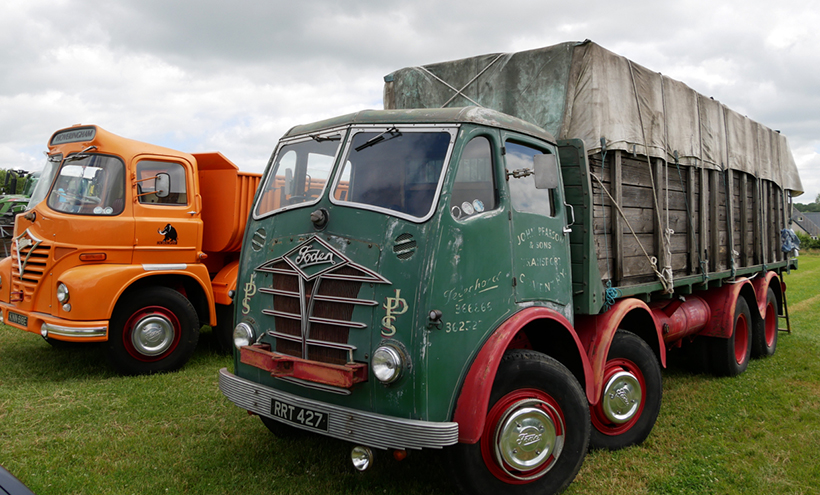
A brace of John Pearson’s Foden lorries were also in attendance at the event, with his fabulous and incredibly rare Hoveringham Foden S21 proving its enduring popularity – particularly to those lucky enough to be taken for a ride in it.
In a nod to the present day, there was also a Kubota on parade, demonstrating a Steelwrist Tiltrotator, which could best be described as a wrist at the end of the boom. It gives the operator greater flexibility for attachments, by being able to rotate them though 360 degrees, and tilting at up to 45° to the left or right. The rotating function on a Steelwrist Tiltrotator is accomplished with a worm gear, which enables to rotate endlessly.
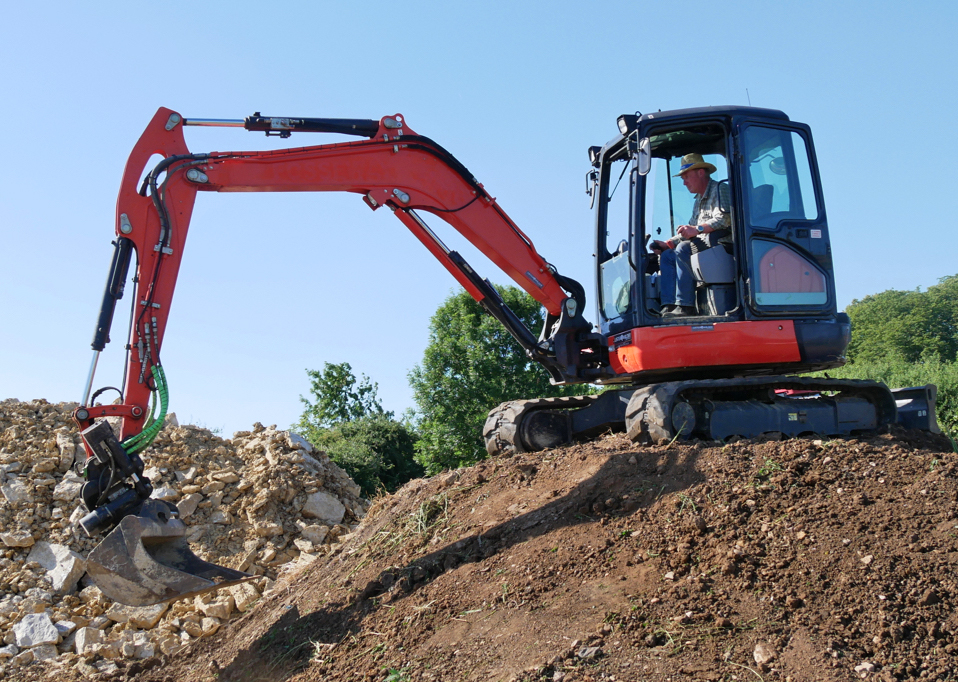
Patrick Bulcock, MD of Steelwrist UK, is seen here putting a Tiltrotator attachment through its impressive paces.
To subscribe to Classic Plant & Machinery, simply click here



